Chapter 9
Reading Books and Newspapers with iBooks and Newsstand
Your iPad is more than a wonderful device for playing games, surfing the Web, and watching videos. It's also a powerful e-book reader with a library of more than 30,000 free books at your fingertips, as well as thousands more paid books, including many New York Times best-sellers. But the iPad's iBooks app doesn't stop there! You can also add your PDFs to iBooks so you can carry them with you on the iPad. This allows you to access all your PDFs from the same library as your books–a great feature for people who regularly work with or receive PDF files. In addition to iBooks, Apple has introduced Newsstand in iOS 5. Newsstand lets you view and buy all your magazine and newspaper subscriptions in one easy-to-access location.
In this chapter, you'll discover how to navigate your iBooks bookshelf and the books themselves. You'll also learn about bookmarking favorite passages from books, creating notes, organizing your books into collections, and even having a book read to you. We'll take you through all the PDF features of iBooks. Finally, we'll explore Newsstand and show you how to shop for an organize all your subscriptions. Let's get started!
The iBooks App
As you discovered in Chapter 8, the iBooks application does not ship on the iPad. To use it, you must first download it for free from the iTunes Store. Once you have done this, the iBooks icon will appear on your iPad's Home screen (see Figure 9–1).

Tap the icon to launch the iBooks app. When you do, you'll be presented with your iBooks bookshelf (see Figure 9–2). The bookshelf will be populated with any e-books you have added to your books library in iTunes (more on that in a moment).
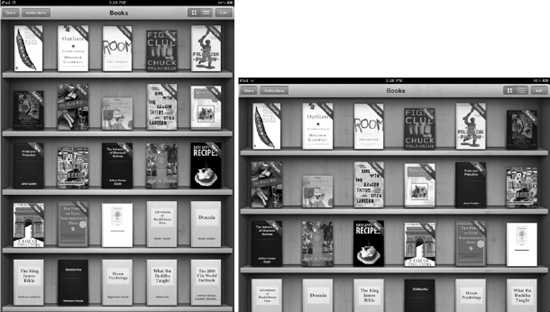
Figure 9–2. The iBooks bookshelf in Landscape and Portrait views
Syncing Books
Before you can sync books, you need to first acquire some books to sync. We talked about syncing books to your iTunes library in Chapter 2, but we'll touch on it again here. There are a few ways for you to obtain books to sync to your iPad.
The iBookstore
In the upper-left corner of your bookshelf, you'll see a Store button (see Figure 9–3). Tap this button, and your bookshelf will flip around like a secret passageway. On the backside of the bookshelf, you'll be presented with the iBookstore. In the previous chapter, you learned how to buy books and download free Project Gutenberg books from the iBookstore. Any book you download from the store will appear on your bookshelf and automatically sync with your computer when you connect to it with your iPad. For a complete walk-through of buying books in the iBookstore, see the previous chapter.
ePub Books
A second way to get books on your bookshelf is to download ePub-formatted books from other web sites and then drag them into your books library in your iTunes source list on your computer. Any ePub books you've added to your iTunes library will be automatically synced the next time you connect your iPad to your computer.
What Is ePub?
ePub is a universal e-book file format. Any device capable of opening and displaying ePub files can display the book, no matter where you bought it. In other words, you don't need to buy your books from the iBookstore only. Several sites sell e-books in the ePub format that are compatible with the iPad. ePubbooks (www.epubbooks.com/buy-epub-books) has an excellent list of sites that offer ePub books for sale and for free download. Once you've downloaded an ePub book, simply drag it to your iTunes library, and the book will sync to your iPad on the next connection.
NOTE: Amazon's Kindle bookstore is another popular place to buy e-books. However, Kindle books don't use the ePub format. If you buy an e-book from the Kindle store, you'll need to download Amazon's free Kindle book reader app for the iPad to read those books. You will not be able to read a Kindle book in the iBooks app. Barnes & Noble's Nook for iPad is another way to buy e-books for the iPad, and the BN eReader app supports the standard ePub format. This means you can move books back and forth between various ePub readers.
Navigating Your Bookshelf
OK, you have a bunch of books downloaded and synced. Before you start reading them, let's get a little better acquainted with how to navigate all the books on your bookshelf.
Figure 9–3. From the title bar of the iBooks bookshelf, you can access the iBookstore, navigate between your collections, and access the View and Edit modes.
The Title bar in the iBooks bookshelf features five buttons:
Store: As mentioned previously, tapping this will take you to the iBookstore.
Collections: The Collections button displays a list of all your book collections in iBooks. By default, you'll see two collections:
- Books: When you tap Books, you'll be presented with your bookshelf. This contains all the e-books you have in the iBooks app.
- PDFs: Tapping PDFs will take you to your PDF bookshelf. We'll talk more about the PDF features of iBooks in the second half of this chapter.
We'll also talk about collections in detail later in this chapter.
Icon View: This is the default view of your bookshelf. The button with four white squares shows you all your books' covers in large, easy-to-see thumbnails.
List View: This is the button next to the Icon View button. It has three white lines in it. Tap it to see a List view of your iBooks bookshelf (see Figure 9–4).

Figure 9–4. The List view with sorting options by bookshelf, title, author, and category
When you tap the List View button, you'll notice the genre of the book is displayed next to the book's name. You'll also notice that, at the bottom of the screen, you have four ways to sort your lists:
Bookshelf: Displays your books in the order that they appear in Icon view.
Titles: Displays your books in alphabetical order by title.
Authors: Displays your books in alphabetical order by author name.
Categories: Displays your books in genre groups. Books are arranged alphabetically in each grouping.
List view also displays a search field in the title bar. Tap the search field to open the keyboard and type in your search keywords. You can search through your books library by words in a title or the author's name. Tap a book in the search results to open it. Note that you can search for books in Icon view, too. All you need to do is pull down on the bookshelf, and a search field will be revealed (see Figure 9–5).

Figure 9–5. The search field in Icon view
Edit: The Edit button is in the top-right corner of the bookshelf. Tapping this button will cause you to enter Edit mode. Edit mode allows you to rearrange the order of books or delete books from your library completely.
- Rearranging books: In Icon view in Edit mode, simply tap and hold a book's cover and drag it to a new position on your bookshelf. This is no different from the way you arrange apps on your iPad's Home screen. In List view in Edit mode, you can only rearrange books in the Bookshelf sorting category. Tap and hold the grip bars on the right of the book's genre and drag the book to your preferred position.
- Deleting books: When you tap the Edit button in Icon view, you'll see black and white Xs appear on the left corner of a book's cover. Tap the X to open adeletion confirmation window. Tap Delete to remove the book from your iPad. In List view in Edit mode, you can delete books from any ofthe four sort views. Simply tap the white minus sign (–) button in the red circle, and then tap the Delete button that appears at the opposite end of the screen to confirm the deletion.
NOTE: Deleting a book from the iPad will not delete it from your iTunes library on your computer. You will be able to resync the book any time you want.
You may notice that some of your books have a blue or red ribbon in the upper-right corner of the cover. The red ribbons say Sample, and they signify the book on your bookshelf is a sample you've downloaded from the iBookstore. Samples will stay on your iPad until you delete them or buy the full book, but they will not sync back to your iTunes books library.
Blue ribbons say New, and they signify that you have not begun reading the book yet. The New ribbon will appear until you've turned at least one page inside the book (see Figure 9–6).
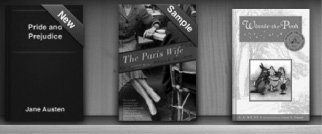
Figure 9–6. Books with the New and Sample ribbons next to a previously read book
Organizing Your Books into Collections
iBooks does a wonderful job of displaying your books and PDFs on a digital bookshelf; however, there may come a time when your book collection grows so large that seeing them all displayed on a single iBooks bookshelf might not make for the easiest browsing experience.
Luckily, Apple has a built-in feature called collections that allows you to sort your books onto different bookshelves for easier organization. In the upper-left corner of the iBook screen, you'll see the Collections button. Tap it to reveal a list of book collections in iBooks (see Figure 9–7).
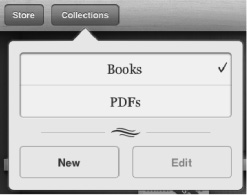
Figure 9–7. The Collections menu
Be default you'll see two collections: Books and PDFs. Any e-books you have will appear on their own bookshelf under the Books collection, and any PDFs you have will appear on their own bookshelf under the PDFs collection.
Creating New Collections
If you'd like to create new collections to better manage your library, you can do so easily:
- Tap the Collections button so the Collections menu appears.
- Tap the New button.
- A new collections field will appear (see Figure 9–8); enter the name of your new collection.

Figure 9–8. Creating a new collection
- When you have entered your collection's name, click Done, and your new collection will be created.
Adding Books and PDFs to Your Collections
Once you've created a new collection, you need to add some books or PDFs to it. Follow these steps to add books or PDFs to a collection:
- Tap the Edit button in the upper-right corner of an iBooks bookshelf.
- Tap the book(s) or PDF(s) you want to add to a collection. The selected book or PDF cover will fade, and a blue check mark icon will appear in its lower-right corner (see Figure 9–9).
- Tap the Move button in the top-left corner of the iBooks bookshelf. The collections list will be displayed (see Figure 9–9).
- Choose the collection you want to add the selected books or PDFs to by tapping its name. An animation will show the selected books flying into the selected collection, and you'll be taken to that collection's bookshelf, where you'll now find your selected books or PDFs.
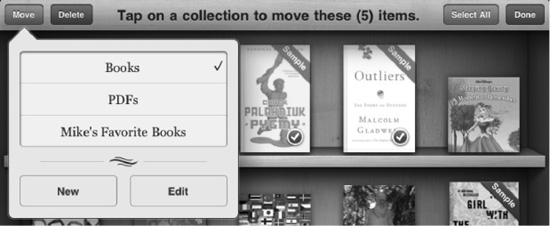
Figure 9–9. Separating books into collections
NOTE: You can place a specific book or PDF in only one collection at a time. When you add a PDF or book to a collection, it is removed from its previous collection.
Navigating Between Your Collections
iBooks makes it easy to navigate between your collections. In fact, it gives you two ways to do this:
- Tap the Collections menu and then tap the collection you want to view.
- From any collections bookshelf, drag your finger left or right to swipe to the previous or next collection.
Editing Collections
iBooks lets you edit the names of existing collections, arrange the collections in a specific order, and delete collections.
Follow these steps to edit the name of a collection:
- Tap the Collections button so the Collections menu appears.
- Tap the Edit button.
- Tap the collection that you want to edit the name of.
- Enter the new name of the collection.
- Tap the Done button when finished.
Follow these steps to arrange the order of a collection:
- Tap the Collections button so the Collections menu appears.
- Tap the Edit button.
- Use the grip bars to drag your collections up or down in the collections list (see Figure 9–10). You can't move the Books or PDFs collections.
- Tap the Done button when finished.

Figure 9–10. Editing collections
Follow these steps to delete a collection:
- Tap the Collections button so the Collections menu appears.
- Tap the Edit button.
- Tap the red minus sign button (see Figure 9–10).
- A red Delete button will appear. Tap it to delete the collection. A warning dialog will appear, asking you whether you want to remove the collection's items from the device or move the items the back to their default collections. Tap Remove to remove the items from your iPad, or tap Don't Remove to keep them on the iPad and move them back to their default (Books or PDFs) collections.
Reading Books
The bookshelf displays your books in a gorgeous and easy-to-find layout, but books are meant to be read, not looked at. Let's get started!
To read a book, simply tap its cover. The book will fly forward and open. If it's the first time you've opened the book, you'll be on the first page. If you have opened the book before, it will open on the page you left off on.
While reading a book, you can choose between Landscape or Portrait orientation. Landscape mode shows you two pages side by side, while Portrait mode shows you a single page (see Figure 9–11). You can navigate between the two modes simply by rotating your iPad.

Figure 9–11. Reading a book in Landscape and Portrait modes
At the top of any book's page, no matter what orientation you are in, you'll notice a menu that contains a series of buttons (see Figure 9–12).We will get to using all these features momentarily, but let's look at the various menu options first:
Figure 9–12. A book's menu buttons
Library: Tapping this effectively closes the book and takes you back to your bookshelf. The next time you open this book, you'll be taken to the page you were on when you left it.
Table of Contents/Bookmarks: This button is signified by three dots, each with a line after it. Tap this button to be taken to the book's Table of Contents and Bookmarks page.
Buy: This button (not shown) appears next to the Table of Contents button when you are reading a sample book downloaded from the iBookstore. Tapping it allows you to buy the full book.
Brightness: This is the button that looks like the sun and changes the screen brightness while inside the iBooks app only.
Font: This button, symbolized by a small and big A, allows you to change the font of the book's text, as well as the font size. This is helpful for those people who need larger text while reading, such as older people or anyone with sight difficulties. It also lets you change the background of the book's page to a sepia tone.
Search: The Search button looks like a magnifying glass and allows you to search through a book's text.
Bookmark: Tap the Bookmark ribbon button to lay down a red bookmark in the upper-right corner.
Page Scrubber: This is the series of dots that run along the bottom of a book's page (see Figure 9–14). Tap and hold the square button that sits on the dots; next, drag it left or right to quickly navigate through the book's pages.
While reading, you can tap the center of a book's page to show/hide the menu and page scrubber bars. You'll be left with only the title of the book and the name of the author (in Landscape view) at the top of the page–and the page number at the bottom.
Turning Pages
You have three ways to move through a book's pages:
- Tap and hold the side of a page, and then drag your finger across; the page will curl on the screen (see Figure 9–13). When you lift your finger, the page turn will be complete.

- Tap the right or left side of the screen to move forward or backward. This accomplishes the same function as the previous one but with less interactive eye candy.
- Tap and hold the page scrubber bar at the bottom of a page (see Figure 9–14) and then slide your finger in either direction. The name of the chapter and the page number will appear above the page scrubber bar as you slide. When you've found the right page, remove your finger from the scrubber, and the page will flip, taking you to the page you've selected. The page scrubber bar lets you go to a specific page number quickly, without having to flip through all the pages of the book.

Figure 9–14. The page scrubber bar shows the page number and chapter title.
NOTE: Many people read in bed. Reading an iPad in bed is fine, but because of its built-in accelerometer that detects orientation, you may find the screen rotating back and forth, depending on the angle you are holding it at. To lock the iBooks app into a particular page view while reading in bed, switch the orientation lock on by flipping the side switch on the side of the iPad. Note that you'll want to make sure you've enabled the side switch as an Orientation Lock button and not the Mute switch. Go to Settings(General and select Lock Rotation under the ![]() Use Side Switch to” option.
Use Side Switch to” option.
Adjusting Brightness
Depending on your eyes, you may find it easier to read text with a brighter or darker screen. To adjust the iPad's screen brightness while reading a book, tap the Brightness button (the one that looks like a sun) in the menu bar. A drop-down menu will appear with a slider in it (see Figure 9–15).

Figure 9–15. The Brightness slider
Slide to the left to reduce brightness and to the right to increase it. When adjusting the brightness in the iBooks app, the entire screen will brighten or dim according to your slider settings; however, once you leave the iBooks app, the screen brightness will return to the settings you have specified in the iPad's Settings application. This is a great feature because you can instantly switch between brightness levels when you enter or exit the iBooks app without having to reconfigure them each time.
To change your iPad's overall brightness levels, go into Settings on the iPad's Home screen and choose Brightness & Wallpaper. Adjust the slider there to set your preferred brightness.
Adjusting Font, Font Size, and Page Color
Depending on your eyesight, you may want to adjust the font size of the text. Tap the Font button (side-by-side large and small As) to be presented with the Font menu (see Figure 9–16). Tap the small A to decrease the font size and the large A to increase it. Increasing or decreasing the font size will result in fewer or more words on a page, respectively.

Figure 9–16. The Font panel
Below the font size controls, you'll see a button that says Fonts. Tap this to select from six font types (see Figure 9–17). Different font types can affect the number of words you see on the screen slightly. Why change the font? Some people have an easier time reading different fonts, especially serif or sans serif fonts. A sans-serif font is like the font of the text of this book; there are no little lines hanging off the letters. A serif font is one like Times New Roman.
Below Fonts, you'll see the Sepia button. Tap to toggle this feature on or off. When On, the entire book will take on a yellow-brown tone, similar to the color pages in an old paper book start to turn after a while. Some people find reading from a sepia screen easier on the eyes because you aren't staring at a bright white background.

Figure 9–17. The fonts you can choose from
Searching Text
You can search for any word or bit of text in the book you are reading by simply tapping the Search icon, which looks like a magnifying glass. A search field will pop up, along with a keyboard. Type any search term you want, and you'll be presented with a list of results, displayed by order of page number (see Figure 9–18). Tap any result to be taken instantly to that page. On the page, your search term will have a brownish yellow bubble over it.

Figure 9–18. The Search panel lets you perform in-text searches, as well as quickly link to Google and Wikipedia searches on the Web.
You can also perform a Google or Wikipedia search for your word or phrase. Below the search results, you'll see a Search Google button and a Search Wikipedia button. Tap either to leave the iBooks app. You'll be taken to Safari, where the Google search results or Wikipedia entry page will be presented.
Bookmarking a Page
Tapping the Bookmark icon will cause a red bookmark to be laid down at the top of the page (see Figure 9–19). Laying down a bookmark adds a shortcut of the page to the Table of Contents/Bookmarks page, so you can quickly access the bookmarked page later. Bookmarking in iBooks isn't really like using a bookmark in a physical book. In the iBooks app, the bookmarking feature is more akin to dog-earing a page on a real book, since you aren't limited to one bookmark. You can bookmark as many pages as you want. To unbookmark a page, tap the red Bookmark ribbon.

Figure 9–19. Tap the Bookmark button (left) to lay down a bookmark (right).
Interacting with Text
Your interaction with the book's text isn't limited to search. What we'll show you next is one of the reasons why e-books are superior to traditional paper books. However, paper books still have a leg up on e-books in many ways. See an article about the two formats here: www.tuaw.com/2010/05/08/a-tale-of-two-mediums-despite-the-ipad-traditional-books-aren/. One advantage paper books have over e-books is that they are relatively cheap (especially if you buy them used). Also, you don't need to be afraid to take them to a park or a beach. Sand or dirt isn't going to affect the usability of a paperback the same way it will affect an electronic device like the iPad. Also, while reading in public, paper books are a much lower theft target than Apple's latest gadget wonder.
While on any page, press and hold your finger to the screen, and a Spyglass icon will pop up on the page. To move it around, simply drag your finger. Below the Spyglass icon, a single word will be highlighted in blue. When you've found the word you want, remove your finger from the screen. The Spyglass icon will disappear, and the word will be highlighted with grab bars on either side. Drag the grab bars to select more than one word, such as a sentence or entire paragraph.
With your selection confirmed, you'll be presented with five text-selection tools from the black pop-up menu that appears (see Figure 9–20):

Figure 9–20. The text-selection tools
Copy: Select to copy the text so you can paste it into another application or the search field. Note that the copy function works only with PDFs and non-DRM (digital management rights) e-books. You will not be able to copy text from any books purchased from the iBook store because of its copy-protection software.
Dictionary: This is our favorite feature of the iBooks app because it shows you one of the primary advantages–and ease-of-use features–that e-books have over traditional paper books. When reading a paperback book, if you don't know a word, you need to put the book down and grab a dictionary. On the iPad, if you don't know a word in a book, you can simply select it and tap the Dictionary button. A window will pop up on page with the definition of the word (see Figure 9–21). You can then tap elsewhere on the page to close the Dictionary window and get back to reading the book. Simple.

Figure 9–21. The Dictionary panel
Highlight: Tapping Highlight will mark the text as if it's been marked by a highlighter (see Figure 9–22). Apple has outdone itself here because the highlighting actually looks the same as it does on physical paper.

Figure 9–22. Highlighted text. When you highlight text, it automatically gets added to the Bookmarks page.
If you tap the colored highlight, another pop-up menu appears that allows you to change the color of the highlight, create a note to go along with the highlighted text, or remove the highlight (see Figure 9–23). Color selections are yellow, green, blue, pink, and purple. Any newly selected text you choose to highlight will be highlighted the color of your last choosing. Any text you highlight will show up in a list on the Bookmarks page (which we'll get to in a moment).
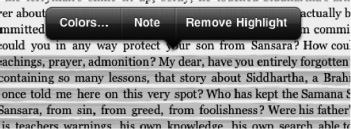
Figure 9–23. Options for highlighted text
Note: Tapping Note will automatically highlight the selected text and then cause a Post-it style of note to fly forward on the screen and the on-screen keyboard to appear (see Figure 9–24). You can type as much text as you want in the note and scroll up and down using your finger. The color of the note will be based on the color you chose for your highlight. Tap anywhere on the screen to close the note. You'll see a small Note icon appear on the side of the page with the date you wrote the note on (see Figure 9–24). Tap the note's icon to edit the note. Tap the text's highlight and select Remove Note to delete the note.
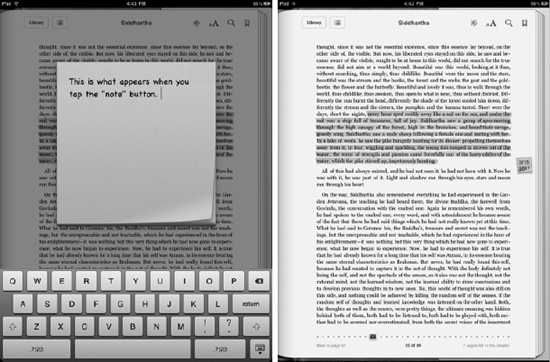
Figure 9–24. Creating a note and the Note icon in the margin of the page after creation
Search: Tapping Search will open the Search window (which looks like a magnifying glass) in the upper-right corner of the page. The text you selected will be automatically filled in as the search query.
Accessing the Table of Contents, Bookmarks, and Notes
Tap the Table of Contents/Bookmarks button (the button that has three dots followed by three lines, as shown in Figure 9–12) at the top of your page to be instantly taken to the Table of Contents and Bookmarks page (see Figure 9–25).
The Table of Contents and Bookmarks page is, unsurprisingly, divided into Table of Contents and Bookmarks sections; each section has its own tab.

Figure 9–25. The Table of Contents and Bookmarks page. Switch between the two by tapping the appropriate tab. Return to your last position in the book by tapping the Resume button.
The Table of Contents tab displays the book's table of contents as a scrollable list. Tap any item in the Table of Contents to be instantly taken to it.
The Bookmarks tab displays all your bookmarks, highlights, and notes. They are divided into two sections: Bookmarks and Highlights & Notes. Under the Bookmarks heading, you'll see a list of chapter names or numbers that hold the bookmark, as well as the page number of the bookmark and the date you bookmarked the page. A red ribbon representing the bookmark lies next to the bookmark's page number. Tap any Bookmark icon to jump to the bookmarked page.
Under the Highlights & Notes heading, you'll see a list of all the highlights and notes you've created. For each highlight and note, you'll see the beginning of the first sentence that the highlight or note appears in, as well as the chapter name or number. You will also see the page number and the date you marked the page. The date is highlighted in the color that you choose to highlight the text in. This is a nice feature if you use different colors for different bookmark classifications, such as quotes from the antagonist in blue and quotes from the protagonist in pink.
Remember than whenever you create a note, a highlight is automatically created. You can distinguish between a highlight and a note easily. Any note has a tiny Post-it style of Note icon in the right margin. To be instantly taken to any highlight or note, tap it in the list. To read a note you've created without leaving the Table of Contents page, tap the Note icon in the margin. The note will spring forward on the screen (see Figure 9–26). You can then tap the note to bring up the on-screen keyboard to edit it. Tap the area outside of the note to close it.

Figure 9–26. Reading a note on the Bookmarks page
To exit the Table of Contents/Bookmarks page, tap the Library button to return to your bookshelf or the Resume button to return to your last position in the book.
Sharing Notes
The iBooks app allows you to share the notes you have written in two ways: by e-mailing them or by printing them. To share your notes, tap the Share button at the top of the Table of Contents page. The Share button looks like an arrow breaking out of a box. From the Share menu that appears, tap the Email button to create a new e-mail with all the notes in the body of the e-mail or tap the Print button to print your notes to a wireless AirPrint printer (see Figure 9–27).

Figure 9–27. Share notes by e-mailing or printing them.
Having a Book Read to You
Not only can you read books on the iPad, but you can have the iPad read books to you. Using iPad's VoiceOver screen reader technology, you can make the iPad read any text to you, including the text of an entire novel. We talked about VoiceOver in Chapter 2, but we'll touch on how to activate it for iBook reading. Follow these steps to do so:
- Turn VoiceOver on. Go your iPad's Home screen and tap Settings, and then choose General
 Accessibility
Accessibility  VoiceOver. Triple-click the Home button, and then selectToggle VoiceOver.
VoiceOver. Triple-click the Home button, and then selectToggle VoiceOver. - Return to your book in iBooks. Triple-click the Home button, and a pop-up will appear. Tap Turn VoiceOver On.
- Now you have two options. To have everything read to you from the top of the page, use two fingers held together and flick up. Everything from the top of the screen down will be read. To have everything read to you from your current position in the text, use two fingers held together and flick down. Everything from the position where you flicked will be read. When VoiceOver reaches the bottom of the page, it will automatically turn it for you and continue reading.
- To stop VoiceOver reading, tap anywhere on the screen with one finger. It would also be a good idea to triple-click the Home button and select Turn VoiceOver Off now, unless you want to continue using VoiceOver gestures.
Now, you might be wondering why you would have VoiceOver's mechanical voice read you a book when you can just buy an audiobook and sync it to the iPad. The simple answer is because not all books are in audiobook format. It should also be noted that the iBooks VoiceOver ability isn't a feature intended to appeal to a large number of readers; rather, it is an accessibility option to help those who are hard of sight read their favorite books.
NOTE: Some books may not be compatible with VoiceOver.
Syncing PDFs
PDF support was a big feature request when people started playing around with iBooks. Apple listened to them and added it with the introduction of iBooks 1.1. Don't worry about whether you have the latest iBooks app. If you've updated or downloaded the app recently, you've got the latest version, which supports PDF viewing. If you aren't sure, open the App Store application on the iPad to check whether any updates are available for your apps.
You have two ways of syncing PDFs to iBooks on your iPad: using iTunes or using the iPad's Mail app. To sync PDFs via iTunes, simply drag any PDFs you want to sync into your iTunes library. They will automatically be added to the Books section of your iTunes library. The next time you sync your iPad to iTunes, your PDFs will sync as well.
You can also add PDFs to iBooks through the iPad's Mail app. To do this, open Mail and select an e-mail that has a PDF attachment. Tap the attachment in the body of the e-mail to see it previewed full-screen. While previewing it full–screen, you'll see an Open In– button in the upper-right corner. Tap this button and select iBooks from the drop-down list (see Figure 9–28). The Mail app will close, and the PDF will automatically open in iBooks and be added to your PDF bookshelf. When you sync your iPad with iTunes, any PDFs you have added to iBooks in this manner will be added to your iTunes books library.

Figure 9–28. Opening a PDF in iBooks using Mail
Navigating the PDF Bookshelf
To see all your PDFs contained by iBooks, open iBooks, tap the Collections button in the iBooks Menu bar, and then tap the PDFs button (see Figure 9–7). Doing so will take you to your PDF bookshelf. As you can see in Figure 9–29, the PDF bookshelf is similar to the regular bookshelf. The PDF bookshelf will be populated with any PDFs you have added to iBooks.
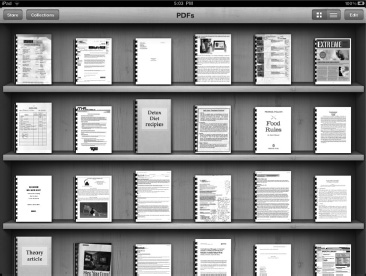
Figure 9–29. The PDF bookshelf is identical to the regular bookshelf. If you know how to navigate one, you know how to navigate the other.
Just as with the regular bookshelf, you can choose to view your PDFs as icons or in a list. In List view, you will find you can sort your PDFs by titles, authors, categories, or bookshelf (the way they are arranged in Icon view). List and Icon views also present you with a search field, so you can search your PDFs by name or author. The PDF bookshelf works just like the regular bookshelf when editing and deleting items. Simply tap the Edit button to rearrange or delete PDFs.
Navigating and Reading PDFs
To read a PDF, tap its cover. The PDF will fly forward and open. If it's the first time you've opened the PDF, you'll be on the first page. If you have opened the PDF before, it will open to the page you left off on.
You can view PDFs in Portrait or Landscape mode (see Figure 9–30); however, unlike with books, viewing a PDF in Landscape mode does not show you two side-by-side pages. It's baffling why Apple didn't add this feature (at the time of writing), but most likely it will be added sometime in the future.

Figure 9–30. Viewing PDFs in Landscape and Portrait modes
At the top of any PDF's page, no matter what orientation you are in, you'll notice a menu that contains a series of buttons with the name of the PDF document in the center (see Figure 9–31). These buttons will already be familiar to you because they are similar to the ones you see while reading an e-book:
Figure 9–31. A PDF's menu buttons
Library: Tapping this closes the PDF and takes you back to your PDF bookshelf. The next time you open the PDF, you'll be taken to the page you were on when you left it.
Contact Sheet: This button is signified by three dots, each with a line after it. Tap this button to be presented with a contact sheet–a series of thumbnails of all the pages in a PDF.
Share: Tapping this button allows you to e-mail the currently selected PDF or print it to a wireless AirPrint printer.
Brightness: This is the button that looks like the sun and changes the screen brightness while inside the iBooks app only.
Search: The Search button looks like a magnifying glass and allows you to search through a PDF's text. It also has quicklinks to search Google and Wikipedia for your selected search term.
Bookmark: Tap the Bookmark ribbon to bookmark the current page you are on. Remember that bookmarks in iBooks behave differently than traditional bookmarks for a paper book. Bookmarking a page in iBooks means you have effectively “dog-eared” the page. You can have multiple bookmarks in the same document. To remove a bookmark, tap the Bookmark icon again.
Page scrubber: This is the series of page icons that run along the bottom of a PDF's page (see Figure 9–32). Drag your finger across the thumbnails to quickly navigate through the PDF's pages. You'll see the page number of the page currently selected float overhead. You can also just tap any thumbnail to jump right to that page.

Figure 9–32. The page scrubber bar at the bottom of a PDF
While reading, you can tap the center of a book's page to show/hide the menu and page scrubber bars. While on a page, you can double-tap it to zoom in; or, for more control, you can use a pinch gesture to zoom in or out. To navigate the pages of a PDF, simply swipe your finger to the left or right to move forward or backward one page. You can also tap the margins of a page to move forward or backward, or you can use the page scrubber bar at the bottom of the page. Alternatively, you can scroll through the large thumbnails that represent all the pages in the PDF document by using the contact sheet.
Using the Contact Sheet
As you can now see, you already know how to use the PDF menu bar because it is so similar to an e-book's menu bar. The only feature that is slightly different is the Table of Contents button, which has been replaced with a Contact Sheet button (note that both icons are identical–three dots, each followed by a line).
Tap the Contact Sheet button, and you'll see all the pages in the PDF document presented to you in large thumbnails that you can then scroll through with the swipe of your finger (see Figure 9–33). This is useful when you are dealing with a very large document with lots of diagrams or images. It allows you to quickly search the PDF by eye. When you find the desired page, tap it, and you'll be instantly taken to that page in the document.

Figure 9–33. The contact sheet lets you see all the PDF's pages as large thumbnails.
You'll also notice that some contact sheets might have a little red Bookmark icon in their upper-right corner. This means you've bookmarked that page by tapping the Bookmark button in the PDF menu bar (see Figure 9–31). To see only your bookmarked pages, tap the Bookmark button in the upper-right corner of the Contact Sheet menu (see Figure 9–34). Any page without a bookmark will be hidden from view.

Figure 9–34. The contact sheet's Bookmarked Pages view
To leave the contact sheet, you can tap the Library button to return to your PDF bookshelf or the Resume button to return to the page you were on when you navigated to the contact sheet. You can also tap any page to be taken to that page.
TIP: On a Mac, if you can print it, you can turn it into a PDF. Simply choose what you want to turn into a PDF, and then choose Print from the File menu of the application you are in (e.g., Word or Firefox). You'll see a PDF button in the lower-left corner of the Print dialog box. Click it and select Save as PDF… from the drop-down menu. Name the PDF, click Save, and then drag it to your iTunes library. On your next sync, your new PDF will appear in iBooks. If you own a PC, there are several options to turning documents into PDFs. Google “print to PDF” to find the right solution for you.
Settings
There are a few external settings for the iBooks app. Navigate to Settings from the iPad's Home screen and select iBooks from the Apps header on the left side. You'll see five settings (see Figure 9–35):

Figure 9–35. The iBooks app settings
Full Justification: When this set to On, the text on a book's page will fill the width of the page evenly. When full justification is set to Off, the text on the right side of the page will be ragged (see Figure 9–36).
Auto-hyphenation: When this is set to On, iBooks will automatically hyphenate words, allowing more words to be displayed on a single page.
Tap Left Margin: You can set this to Previous Page or Next Page. If you set it to Next Page, tapping the left margin of a book will advance you to the next page in a book instead of taking you back one page. This setting might be nice while reading a book on the iPad at odd angles, such as in bed. With Next Page selected, the only way to go back one page in your book is by using the page scrubber bar at the bottom of the page.
Sync Bookmarks: When set to On, this will sync a book's bookmarks, highlights, and notes between devices. This is nice if you are using iBooks on an iPad and iPhone. When you create a note or bookmark in the book on one device, it will appear on the other.
Sync Collections: When set to On, this will sync your iBooks collections. This is nice if you are using iBooks on an iPad and iPhone. When you create or modify a collection on one device, it will appear exactly the same on the other.

Figure 9–36. The same page with full justification on (left) and full justification off (right)
Newsstand
Newsstand is a new feature of iOS 5 that allows you to view and manage all your magazine and newspaper subscriptions in one place. We call it a feature because Newsstand isn't technically an app. It looks like an app, but it's actually a folder that resides on your Home screen and holds all your subscriptions.
You can see the Newsstand icon in Figure 9–37. The icon on the left show you what Newsstand looks like with no subscriptions. When you start download subscriptions, they appear in the icon (right).
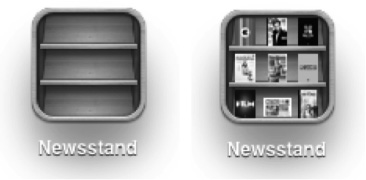
Figure 9–37. The Newsstand icon empty (left) and full of subscriptions (right)
Unlike books in iBooks, magazines and newspapers in Newsstand aren't actually text-based ePub files. Each magazine or newspaper subscription is its own individual app. This means that, unlike with books in iBooks, each magazine you download and view can look and act differently. Again, this is because all subscriptions are just individual apps; they all happen to just be contained in the dedicated Newsstand folder.
To open Newsstand, simply tap it, and your Home screen splits to display the Newsstand shelf filled with all of your subscriptions (Figure 9–38).
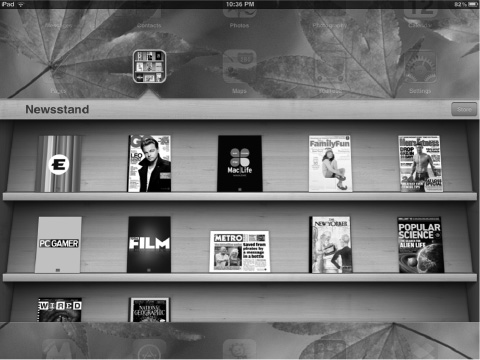
Figure 9–38. The Newsstand shelf
The Newsstand store is part of the App Store, and it's where you'll find all of the magazine and newspaper subscriptions you can buy. To quickly get to the Newsstand section of the App Store from your Newsstand shelf, tap the Store button, and you'll be instantly taken there.
Once you have subscribed to the magazines or newspapers of your choice, the newest issues are automatically downloaded as they become available and are placed in your Newsstand. The cover of the most recent issue or the front page of the most recent newspaper is displayed at the top of that periodical's subscription stack on your Newsstand shelf.
To read an issue, tap it, and that periodical's app will open as a normal app would.
Summary
In addition to doing so many other things, the iPad is also a breakthrough e-book and PDF reader. iBooks, the all-in-one application that lets you buy books and read, search, and mark them up, is an elegant yet powerful tool for discovering new titles and taking your entire book library with you, and Newsstand allows you to subscribe to and automatically download the latest issues of your favorite magazines and newspapers. Here are a few key tips for you to carry away with you:
- You aren't limited to buying books from the iBookstore. Many web sites sell books in the ePub format that you can download and sync to the iPad. A great place to start is
www.gutenberg.org. Also, Googling free e-books will return a host of results for sites that let you download e-books for free. - iBooks has a powerful dictionary-lookup feature that gives you the definition of a word on the book's page.
- The iBooks bookshelf has many views and a search function to help you navigate your books library. These can also help you organize your books and PDFs into collections.
- Use the iPad's physical Orientation Lock button to freeze your iBooks screen in place, avoiding any unwanted screen rotation while reclining on a couch or reading in bed.
- No audiobook? No problem. You can use the iPad's built-in VoiceOver technology to read any book out loud to you.
- Choose different colors for your notes and highlighting. For example, you might use blue for passages you like and green for something you want to reference later. You can see all your bookmarks, notes, and highlights in one easy place (the Bookmarks page, of course!). You can also tap any one of these to instantly jump to it in the book.
- iBooks isn't limited to reading e-books. It's also a PDF reader. Now you can organize, view, and easily navigate all your PDFs–even while on the go!
- Newsstand automatically downloads your latest subscriptions in the background, so when you wake up in the morning, the day's paper will be there waiting for you.
